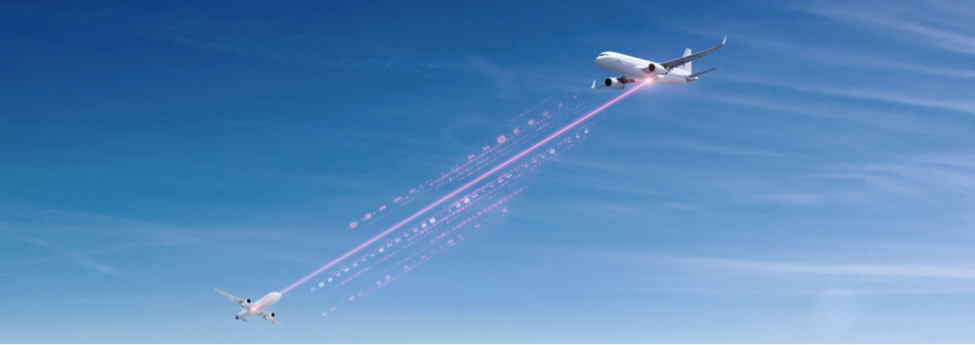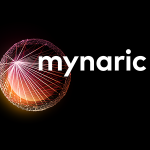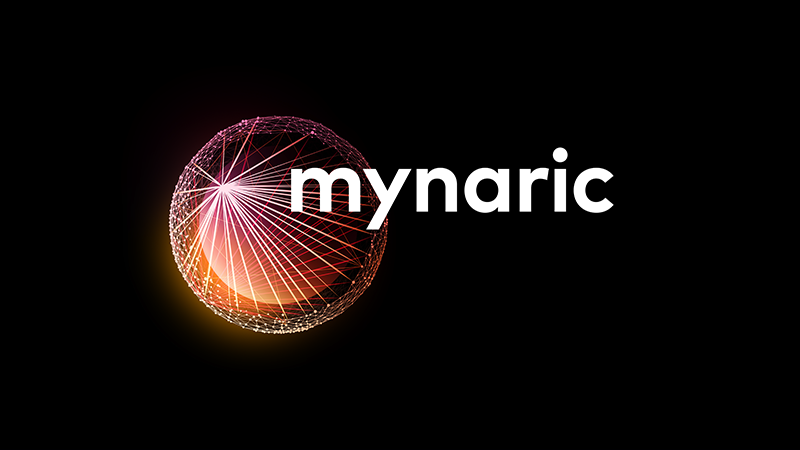German start-up Mynaric is a laser communications company that makes wireless communication equipment to enable high-speed, long-distance data delivery from airborne and spaceborne networks. Their products are designed to withstand the demanding conditions of space and aerial applications and provide backbone connectivity linking aircraft, high-altitude platforms, satellites and optical ground stations.
Since its conception in 2009, the company has grown substantially, including the establishment of a North American office and a flotation on the German stock exchange to raise growth capital.
In September 2018, the company announced the start of serial production of optical ground stations for satellite communications, positioning the company as the only commercial supplier serial producing optical ground stations.
We spoke with the co-founder of Mynaric, Dr Markus Knapek, to discuss the company’s technology, the future outlook for the industry and to gather advice for other emerging start-ups.

Spaceoneers: Tell us about Mynaric and how you got started.
Dr. Markus Knapek: Originally Mynaric was a spin-off from the German Aerospace Centre (DLR), so we have quite a long history in laser communication. Myself and my co-founder – Joachim Horwath – conducted research experiments and demonstrations on aircraft, ground stations and satellites. I did my PhD on this as well.
After 10 years (in 2009) we decided that we should try to realise this research and bring it to the market, so we set up the company but it was slow-going to start with. We received support from the DLR with their technology marketing office helping us through our first important steps, as well as help and support from the ESA’s Business Incubation Centre. We started off with aircraft-based systems (stratospheric networks and platforms) and used a jetfighter to prove we could effectively employ laser communication from the air to the ground. Even though the platform was not very stable – given the jet’s shaking and manoeuvring – we achieved a successful link.
From there, we grew our portfolio and now employ over 80 people, and we are still growing. I’m not sure we could still be considered a start-up anymore and we don’t really feel like one any more either. Our start-up space was one room here in the building we still occupy. It started with three people and after a while we were as many as six in that one room. We are now spread over four floors of that building.

Spaceoneers: It sounds like a Silicon Valley garage-style start-up. 2009 must have been a different time from what we are seeing emerging now as newspace. How did you cope with that at the time?
Dr Markus Knapek: At first, it was very exciting to see our business model evolve. We initially wanted to use lasers to deliver data from aircraft to the ground. This was our original idea – which is still an area we operate in – but when companies seriously started planning for telecommunication constellations in space we figured we would have to manufacture thousands of our laser communication terminals to meet the demand from industry. It was then that we made the strategic decision to become a serial manufacturer as constellation builders would need products not only to provide the specs they needed but also cheap enough for the numbers being discussed. This is what makes us unique.
In this development, we didn’t have the classic space approach (as in a government space agency), but a totally new approach that was one of a kind.
Spaceoneers: What were your biggest challenges to starting, particularly at this time?
Dr Markus Knapek: We were a small team working on the development of a complex technology. One of the first things we had to do was grow the team, something we are still doing. When working with laser communication, you are working with so many different technologies that you need people with knowledge in all of these areas. For example, we needed people with backgrounds in structural, optical and software components, as well as knowledge of the atmosphere which is important because this is what the laser beams travel through. We learned a lot from the DLR in these areas but we needed to widen our knowledge pool, to build our team and the wider company, and all of this took time.
Spaceoneers: What was your support from DLR after you left?
Dr Markus Knapek: We conducted important research while at the DLR and after we left they continued to support us. One of the key drivers of the DLR is for their research to translate into benefits to society through product and technology transfer so the DLR technology transfer office and technology marketing office were a great help for us in overcoming our initial research and business challenges, including our first business plans.
We still have a very good working relationship with the DLR, as we are both focussed on developing the ability of laser communication to transfer higher speeds than at present. For example, our products cater for speeds of up to 10 Gigabits per second (Gbps), which is a lot, but in the future, we want to see upwards of 100 to 500 Gbps, even up to Tbps.
Spaceoneers: How did you establish your first relationships with customers?
Dr Markus Knapek: We had a strong sense of research and technological understanding, but we also had quite a number of contacts through our time at the DLR so this was a great starting point. Naturally, this network has changed quite a lot over the years – it is now much more commercially driven – but it has been a fairly natural transition for us.
We also implemented a change in the company’s management structure. One of our co-founders focused more on the technology and I focused more on business development and contacts. We also brought in Dr Wolfram Peschko who has a lot of experience in the industry and is today the chairman of Mynaric.
Spaceoneers: What is the benefit of laser communications compared to today’s current solutions?
Dr Markus Knapek: There are quite a few major differences. The biggest is the data rate. Laser communications is, in principle, the same technology as radio communication but the frequencies used by laser communication operate at about 10,000 times higher so the data rates you can achieve are way higher.
Actually, laser communication and fibre-optic communication technology are very similar – they both use the same amplifiers, receivers, etc. – and, similar to fibre-optic communication, one laser beam can have several channels each of which, for example, is capable of supporting 10 Gbps or even more without interfering with each other. Such a combination of channels can achieve transmission of over 1 Tbps – the world record is already at 13 Tbps today. This is a significantly greater data rate than what radio communication can support so this is the future for us, as it is the future of telecommunications, we feel.
If you want higher data rates – and the industry is crying out for higher data rates – then laser communication is the only technology that can provide it. Another key advantage is security. Given the narrowness of a laser beam it is practically impossible to tap or jam and as security of data transmission becomes more of an important issue in network resilience so will telecommunication companies turn to laser communication to provide it.
Spaceoneers: Do you envision having a complete link with satellites that are in orbit to transfer data back to the ground?
Dr Markus Knapek: Yes. We believe we are the leading company capable of producing the sheer numbers of laser communication products the constellation builders will need to stitch together their numerous satellites and then direct that data to the ground network. We often say we are the optical fibre provider for the skies and our integration of systems and processes in-house means we are in a position to provide constellations with the high-speed, long-distance backbone connectivity they need.
Our customers (theoretically any constellation builder, be that Google, Facebook, SpaceX, etc.) are establishing their own networks of satellites, so we want to provide the laser terminals for them to put on their satellites to build up their links. We began by selling individual items of hardware, now the next step is to evolve this into a solutions business with customers coming to us and us then delivering the laser communication products and – through them – an operational solution. It’s a step-by-step process: we build up the hardware business, we prepare the terminals, we increase the rate of manufacture, etc. That is the key to our growth.
Spaceoneers: How did you make your stock market debut?
Dr Markus Knapek: We had had a couple of investment rounds but we eventually decided we really needed to go to the stock market to raise the funds to help us move our products into serial production. The funds we raised – €27M – has helped us physically start the move from a development company to a production company. The decision has really paid off for us.
The IPO was a project in itself – it really requires substantial effort to get listed on the stock market.
Spaceoneers: What do you think will drive the biggest changes over the next few years?
Dr Markus Knapek: The establishment of several space constellations all offering various solutions in various applications: for example, some will focus on network security and others in the provision of broadband internet to the 3 billion or so people who are currently unconnected. And I think new constellations will appear with new business models and new applications.
The newspace approach will also focus on how to make new technologies affordable – including communications – so these are the big questions for the years to come.
We will also see new systems at altitudes other than LEO – and in large numbers – and these will also change how we communicate. Loon is one such project at stratospheric levels as well as Facebook’s re-jigged project to operate a drone constellation at similar altitudes. The market for connected aircraft will also benefit from the data rates and reach that laser communication offers.
So, the big disruption will be the increasing level and extent of communication. We want to be in the middle of these changes by offering products produced in series and which cater for high data rates at affordable prices. Laser communication doesn’t replace existing methods, but it expands upon it.
Again with regard to security, I think people will willingly pay for more reliable security.
Spaceoneers: What are the biggest challenges looking forward for the German newspace industry?
Dr Markus Knapek: Germany struggles with investment funding. What you can get in the United States is much higher. In that sense, we’ve managed quite well because we have international investors and an international network. We also explored classic investment channels in Germany but, if we relied on them, we would likely not have survived. It can depend heavily on how well you build up your network.
We have a subsidiary company in the United States now as well. This is building up at the moment and is intended for the US market to support both technology and business development for projects in a North American context. It is an interesting market and most of our business – like most of the market – is in the US, so it made sense, and was a natural place to choose, for a subsidiary.
Spaceoneers: For those starting their own space company or start-up, what would you advise them?
Dr Markus Knapek: Build up a network and have a good management team. Don’t do everything by yourself and get a good team together. We have a good management team here with different capabilities. Talk to people to see how you can improve. You won’t have all the knowledge or capabilities you need in-house so this has to be sourced from the network around you. For example, even now, our business network is still helping us get investments.

